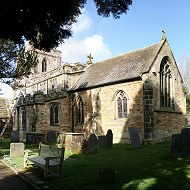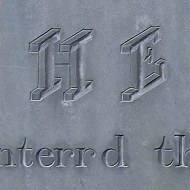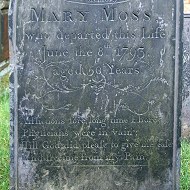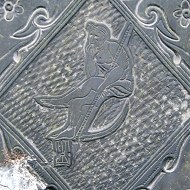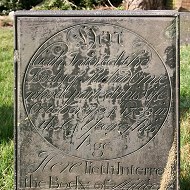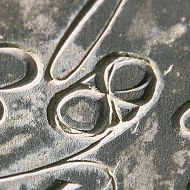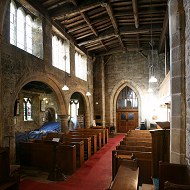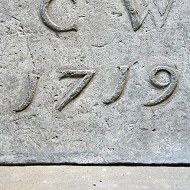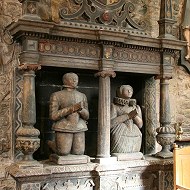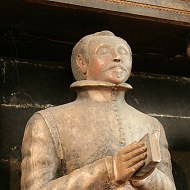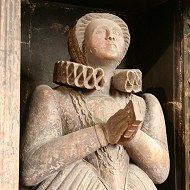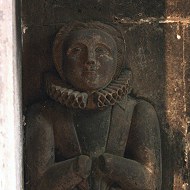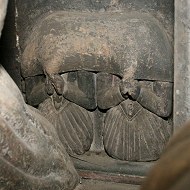Poor Frank Raw

Home | Why PoorFrankRaw? | Contact | Shop
St Mary the Virgin, Denby, Derbyshire
10/03/2015: I am not the biggest fan of Eric Gill though he carved a lot of lettering and wrote a lot about letters. He said:
Letters are things, not pictures of things.
So when I see 3D representations of letters on headstones I feel like diging up the culprits and throwing stones at them. The Victorians were very keen on dreaming up new, hideous and unreadable letterforms for both print and headstones. The example here is on the headstone of Catharine Musson who died in 1797 aged 20, which would be very early for this kind of crime against lettering, but the headstone may have been made and installed later.
The headstone of Mary Moss has a very bored and idle looking grim reaper. Mary Moss was a victim of some long and painful complaint and her headstone carries a rhyme at the bottom which is very common. Hardly a graveyard in the country does not have a version of it:
Afflictions sore long time I bore,
Physicians were in vain;
Til God did please to give me ease
And free me from my Pain.
The headstone of Richard Orme displays a classic attempt to correct a mistake on the part of the letter carver. This example has at least two digits in one spot, possibly three. I can't tell what the original digit was or which others have been tried. It looks like at least three attempts have been made to pin down the date of death - 3, 6, 8 and 9 are all possibilities.
Inside the church the south wall has a very open and bright clerestory, filling the nave with light. The north aisle has an intact gallery. The east wall of the tower inside shows the line of an earlier, more steeply pitched roof.
Just inside the door on a window cill is a lead panel - possibly cut from the roof lead? - made at the time of leading work on the roof and dated 1719. The initials of two church wardens are recorded, but also, graffiti style, the initials of at least two of the workmen who carried out the work, together with the outline of their shoes.
In the chancel, the Drury-Lowe monument, in alabaster, though very grubby and dark, does still display colour on the figures. Behind the kneeling figures of Patrick Rowe and his wife Jane, tucked away in the dark, are the figures of their four children. Two have their heads covered, indicating that they died before their parents.
